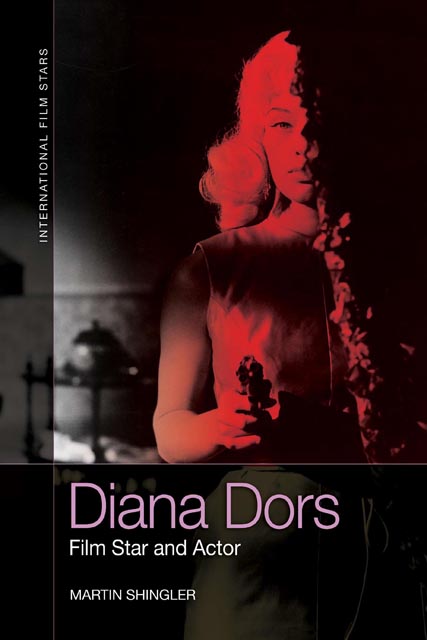Summary
Having performed in fifteen films from 1946 to the end of 1949, Diana Dors made another fifteen in Britain between 1950 and 1956. Once again, these comprised prestige productions with celebrated directors, such as Carol Reed's A Kid for Two Farthings (1955) and low-budget programme-fillers such as My Wife's Lodger (Elvey 1952). Apart from making a cameo appearance in The Saint's Return (Friedman 1953), she mostly received second or third billing during this phase of her career, indicating a significant rise in star status. Indeed, Dors transitioned from starlet to star when granted top billing for Miss Tulip Stays the Night (Arliss 1955) and Yield to the Night (Lee Thompson 1956).
Working mostly as a freelance actress during this period, Dors was employed by a range of studios, including London Films, Hammer and Rank. However, theatre remained an important outlet for the actress’s talents in the early 1950s, particularly when film offers were scarce. In 1950, for instance, she received good press notices for her performance as Carmen in Kenneth Tynan's production of H. M. Tennent's play Man of the World, starring Roger Livesay at the Lyric Theatre in Hammersmith. After winning the Theatre World's ‘Actress of the Year’ Award for 1950, she was given the leading roles in stage productions of Peter Blackmore’s Miranda and Garson Kanin's Born Yesterday (Bret 2010: 33–4). These plays consolidated her reputation as a talented actor while raising her public profile in Britain. Across the Atlantic, meanwhile, her films began to achieve good box-office returns in American movie theatres in 1952, notably when Launder and Gilliat's Lady Godiva Rides Again (1951) was retitled ‘Bikini Baby’ to highlight her role (as explained later in this chapter). It was largely her growing reputation in the States that persuaded Rank to re-hire Dors on a non-exclusive five-year contract in 1955.
During the early fifties, Dors transitioned from a leggy brunette into a busty blonde after bleaching her hair. As her breasts grew exponentially in 1953 and 1954, the actress found herself in much greater demand among British film producers, which resulted in her making more films in 1955 than at any time since 1948.
- Type
- Chapter
- Information
- Diana DorsFilm Star and Actor, pp. 31 - 50Publisher: Edinburgh University PressPrint publication year: 2022



